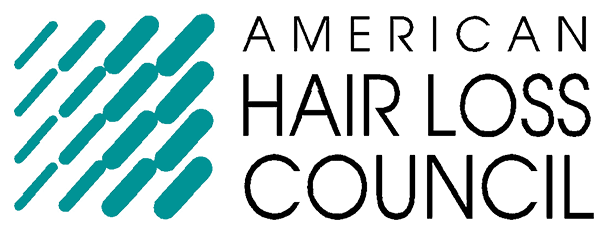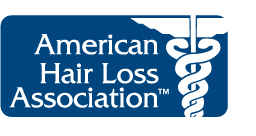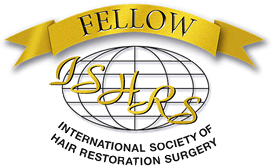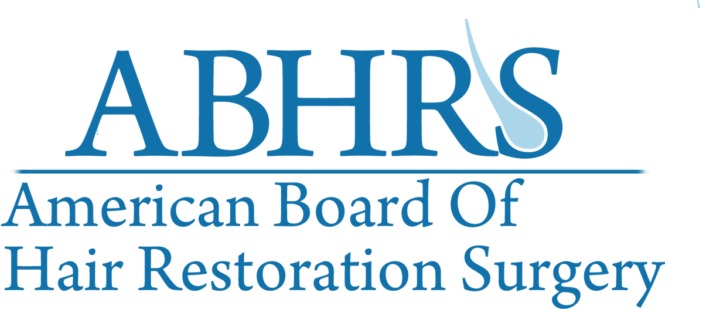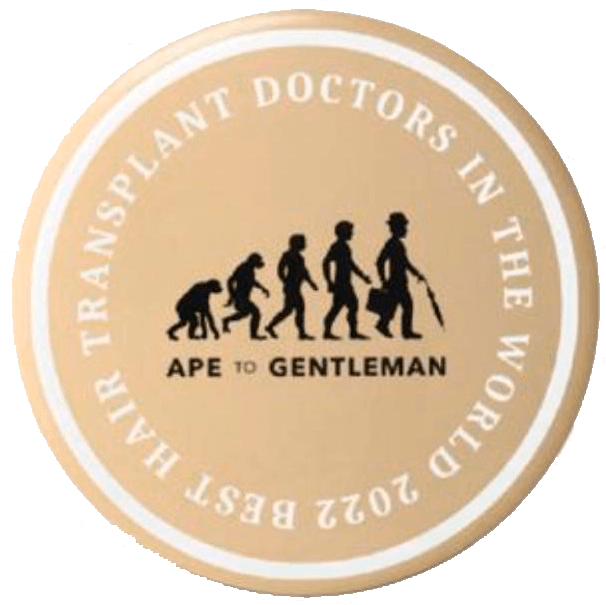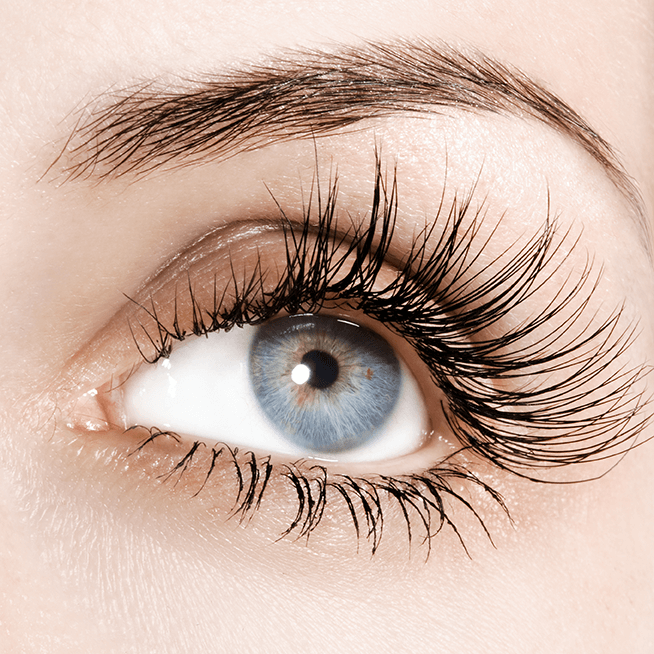Biohacking Baldness with
Hair Loss Expert Alan J. Bauman, MD, ABHRS
on the PureTalk Podcast w/ Marc Richard
Dr. Bauman discusses his 20+ year background, biography, and early influences in hair, medicine, and art, as well as the latest most powerful treatments for thinning hair and hair loss including laser therapy, PRP, PDOgro, topical finasteride Formula 82F, minoxidil Formula 82M, FUE hair transplants and more, including how to get evaluation, advice, and treatments through Dr. Bauman’s at-home Virtual Consultations.
Listen to PureTalk Podcast w/ Hair Loss Expert Dr. Alan Bauman
“Biohacking Baldness” PureTalk Podcast Marc Richard & Dr Alan Bauman
— TRANSCRIPT —
00:00 Mark Richard: Hi. I’m Marc Richard and you’re listening to PureTalk, the podcast where we talk about life, health, and living pure. On today’s episode, we welcome Dr. Alan Bauman. Dr. Bauman is a full-time hair transplant surgeon who founded his medical practice in Boca Raton, Florida in 1997. Since then, he’s treated 20000 patients, performed over 8000 hair transplant surgeries including one on his own father. Dr. Bauman was featured in Men’s Health Magazine, Vogue, Good Morning America, and now the PureTalk Podcast. Dr. Bauman tells us today all about how he became a hair transplant surgeon and how he helps dispel some of the common myths around hair loss. This is PureTalk.
[music]
00:56 MR: Dr. Alan Bauman, welcome, thank you for joining PureTalk. You’re actually our first international guest.
01:01 Dr. Alan Bauman: Great.
01:02 MR: So that’s a tip of some sort.
01:04 DB: Fantastic.
01:05 MR: That’s great.
01:05 DB: Thank you so much for inviting me.
01:07 MR: Absolutely. Speaking of international guests, I know you have a medical degree from the New York Medical School. But were you born in New York? Is that where you started?
01:17 DB: So no, I was born and raised in New Jersey.
01:19 MR: New Jersey? Okay, so just across the water? Okay.
01:20 DB: So a Jersey boy, yeah. So my grandparents had a condo that you could look out and see the New York skyline. And at that time, that would include also the Twin Towers.
01:30 MR: Of course.
01:30 DB: So I do remember being a young boy on their balcony looking out over the “big city” and also visiting my dad’s parents who lived on the Lower East Side. So I always had very close ties to New York.
01:43 MR: Right. And so immediately school was gonna be in New York? There was no choice?
01:47 DB: No, actually I went to college in California.
01:49 MR: Oh, wow, okay.
01:50 DB: Yeah, I studied psychobiology there and then moved back to New York for medical school.
01:54 MR: Great. And your parents, anyone in the medical industry? What did they do growing up?
01:58 DB: Sure. So my dad’s a dentist, he’s still practicing, 50 years, if you need a good dentist in North Jersey.
02:03 MR: Well look at that, wow!
02:04 DB: Yeah. My parents still live in the house we grew up in.
02:06 MR: 50 years.
02:06 DB: And my grandfather was a PhD, he was an organic chemist and had brought back some interesting technology from Europe. So he was an entrepreneur and a PhD that I remember. And my uncle’s a gastroenterologist and I have some cousins who are ENT, and so forth, so. But…
02:24 MR: Okay. So this is in the blood for sure.
02:26 DB: Yeah. I think if you asked my grandmother, when she was still alive, “When did Alan decide to become a doctor?” She would have said, “The day he was born.”
02:35 MR: [chuckle] Right.
02:35 DB: So it was kinda preordained in the family that I was going to medical school and I guess it was a good thing I was good at math, science, and biology or something.
02:43 MR: For sure, yeah. And did you ever rebel against that? Was there any other inclination that you wanted to do something else?
02:48 DB: Well, yeah. So I was about eight or nine years old, I said, “Grandma, what if I don’t wanna become a doctor?” And she said, with a very, straight face, “Alan, you can do whatever you wanna do, the day after you graduate medical school.” And I was like, “Oh, okay.” And so it just didn’t faze me, I guess. I figured out what I needed to do and to work with my strengths. I knew that medicine had wide opportunities. And I was always good with my hands, I always made little plastic models and things like that with my dad when we were little, those are my early childhood memories.
03:18 DB: We built an “HO” train set together, so we were always tinkering and building things, taking things apart, putting things back together. Usually, we would only have just a few pieces left over, the dishwasher, the washer machine, there was only a couple of parts that didn’t fit back, everything seemed to work out okay. No, but my first inkling toward surgery was watching a procedure when I was a teenager at Beth Israel Medical Center and that was my first experience going with, really my first mentor, who was a very prominent plastic surgeon in the city and he introduced me to surgery.
03:52 MR: Introduced you to surgery and then you said the medical system opens up to a wealth of different opportunities. So where did hair come in? Is that… Were you in medical school thinking, “I wanna treat hair”? Or when did that become a thought?
04:04 DB: So in college and in medical school, my only thought about hair was that I liked it and that I wanted to grow it really long. So I had really long hair, I had a ponytail in medical school. And the only other thing I knew about hair is that I watched my dad go bald when I was in high school. And so I always thought in the back of my mind, I didn’t know anything about treatments or procedures or anything like that at that time but I always remember that he struggled with his hair loss situation and he used some magic lotions and stuff that he got, prescription. And eventually, he lost a lot of hair and went into a hairpiece. And so he wore a hairpiece for many, many years. And I always thought as a high schooler and even at college-age and medical school that I wanted to keep my hair, I liked my hair. But that was kind of the extent of it until I learned more about surgery.
04:55 MR: Of course, wow. And then from there you just took off into researching hair. So it was really your father that drove you into the hair business.
05:04 DB: So yeah, that was an early education of on the importance of hair and I felt it. I knew I wanted to keep my hair, I didn’t know really what treatments or procedures were available. But when I was an intern in residency as a general surgeon, thinking about going into plastics, I learned from a patient who had had a hair transplant. And I was literally unable to tell that he had had a hair transplant. And I asked him in this casual conversation as I’m doing his intake for some other procedure that he was having, I said, “Do you mind if I ask you about your hair? What’s going on there? Where did you have your hair transplanted?” And he said, “Up in Toronto.” And I said, “Well, that’s interesting but I really wanted to know where on your head.”
05:44 DB: And so he was telling me in layman’s terms about single follicle implantation and the artistry that was used and the care that he received from that surgeon. And he was delighted to share all of that information with me because… And for me, it was shocking. Because I thought hair transplants were plugs and why would anybody ever really want to do that? It just didn’t seem like a viable option. So I learned a lot from that very brief, early on interaction with that patient who had had some work done, that maybe I should stick that in the back of my mind, “If I’m gonna become a plastic surgeon who mainly treats women I would assume, maybe I should learn about this hair transplant technology so I’ll have some male patients to work on.” And so that’s how my journey got started. And it went from there to visiting different cosmetic surgery lectures, seminars, conferences, expos, and things like that to learn more about plastic surgery and also hair transplantation.
06:43 DB: And the more that I learned, the more that I liked, and the more that I got interested in it. And it just seemed to take over my brain to the point where I wanted to find someone who I could learn from, another mentor aside from my plastic surgery mentor who was trying to groom me to take over his practice. It didn’t really work out. But I did find a physician that I was able to meet with and to learn from. And I spent a year in fellowship training in hair transplantation. And I always thought it was gonna be a short thing, just learn the technique and then go back to my regular pathway.
07:18 MR: Yeah.
07:18 DB: And at the end of all of that, after I learned it, I was like, “I just wanna do this full-time.”
07:24 MR: Yeah.
07:24 DB: And it seemed very bizarre to most people who I mentioned it too because no one had ever really heard of a hair transplant looking natural before in the mid-1990s.
07:31 MR: Well, exactly.
07:31 DB: It just that hardly existed.
07:32 MR: Well do you think of yourself… On that note, do you think of yourself kind of as an artist as well? ‘Cause there is such an art to it, to you’re taking such a prominent thing in someone’s life that they’re really attached to and now giving it back to them. Right? And it’s something they see every day, it’s something people who look at them see every day. So you’re kind of an artist, right?
07:53 DB: Well, there’s a huge amount of art. And I’ve been quoted many times saying the procedure is 90% art and 10% technology.
08:00 MR: Sure.
08:00 DB: You need to have the right tools. A painter needs to have the right paintbrushes and canvas and oils to make his work come to life.
08:07 MR: Yeah.
08:08 DB: But he also has to have some appreciation for Mother Nature and for beauty, especially if you’re gonna recreate something that looks 100% natural.
08:15 MR: Of course.
08:16 DB: And so I spend a lot of time talking about my dad as a dentist, my grandfather, a Ph.D. But one of my early childhood memories is also the smell of my mom’s oil paints. So I remember in our first home, the home that I was basically born and raised in, it was a small apartment above my dad’s dental office and I remember smelling those oil paints that my mom was using to paint a picture of something. I don’t remember even what it was, maybe a vase with flowers or something like that. And so I remember that very vividly. So I’m hoping that maybe somewhere, the DNA got together just between my mom’s oil painting skills and my dad’s dental dexterity or lack of a better way to explain it.
08:56 MR: Right. And it’s come together to create this.
08:58 DB: Yeah.
09:00 MR: Yeah.
09:00 DB: And then the other part of it is really changing people’s lives. Because when it all comes down to it, you can work hard on this part of the process and we get caught up in the nuance of how we do the local anesthetic and how we take care of the grafts while they’re outside of the body and what’s the right wavelength of the laser to use and what platelet concentration is gonna give us the best regrowth and all of these. What dosage and timing of the medications and pharmaceuticals and how do we nuance the ratios of anti-inflammatories with pro-hair growth treatments topically and all of that.
09:31 DB: But at the end of the day, when someone wakes up and looks at themselves with a thicker, fuller, healthier head of hair where they didn’t have it before, that’s the exciting part of it and that’s where the magic happens. When they wake up in the morning, they look in the mirror and they can give themselves a big smile and as my dad used to say, “Look sharp and feel sharp,” all at the same time.
09:52 MR: That’s great. Let’s delve into that a little bit. What do you think it is… This day and age, it seems like everyone’s trying to get rid of hair on their body except for on top of their head. So what do you think that psychological connection with the hair on our head is and where that comes from?
10:06 DB: So like why is hair so important?
10:08 MR: Yeah.
10:08 DB: Oh, well, it’s evolution. It’s obvious ’cause hair is one of the hardest working… Hair follicles are one of the hardest working, most highly metabolic cell populations in your body.
10:18 MR: Okay.
10:19 DB: So it’s very, very sensitive to a lot of different factors, wellness factors.
10:23 MR: Yeah.
10:24 DB: How well you eat or sleep or deal with stress? How much inflammation is going on in your body? All of these nuances and obviously there are so many ways to poison your hair between medications that you could take and things you could do to torture the hair fibers once it’s growing, the chemicals and heat, and all that business. But the point is is that when you have a thick, full, healthy head of hair, you’re displaying to the opposite sex that you are healthy and virile and viable and that you’re a good mate to continue on to procreate and to pass along.
10:58 MR: For sure.
10:58 DB: And to potentiate the species. To keep things moving along. So I think Darwin has a hand in that way, way back.
11:08 MR: Yes.
11:08 DB: Obviously, you don’t need a full head of hair to live a healthy life. But I think because the hair follicle is such a sensitive organ to age and all these other factors that we talked about, that that’s why it’s become important embedded in our brains psychologically for many people. Not everyone.
11:27 MR: Not everyone, no.
11:28 DB: But for many people, that it’s a sign of youth and health and virility and fertility and that’s why it’s important.
11:35 MR: It’s at the top of the list of everyone’s dating profile, isn’t it? Must have, must have a head of hair.
11:40 DB: Well that’s interesting. So years ago used to be… I don’t know, the dating pages or… There used to be… Literally used to be like a want Ad in the papers.
11:50 MR: Okay.
11:51 DB: When I was young. And yeah and so the women would write, full head of hair. That’s what they’re looking for.
11:57 MR: That’s great, yeah. Interesting.
12:00 DB: The dating pages. Now it’s all online.
12:01 MR: Yeah, exactly.
12:02 DB: I just dated myself but yeah.
12:04 MR: That’s fine. I pretended I knew what the dating pages were. That’s alright, that’s okay. So there’s been a lot of…
12:08 DB: You just gotta know I guess which… And I’ve been married for 20-something years. So which way do you have to swipe if you like?
12:14 MR: I think it’s up-down. Even that one I’m not sure.
12:16 DB: Left or right. No. It’s something left or right.
12:18 MR: It is. It’s swipe right. It’s swipe right.
12:20 DB: Yeah. If for thumbs up, is swipe right?
12:21 MR: Is good, right?
12:22 DB: Okay, so yeah. So hair is swipe right.
12:24 MR: There you go. I don’t know if left-handed people are a little bit put off by that. Why isn’t it swipe left? The left…
12:30 DB: Yeah.
12:30 MR: The left-handed people are always getting the shaft, right?
12:32 DB: Yeah.
12:33 MR: There’s been a lot of medical treatments that have been suggested, maybe lotions or snake oils or things like that. Are those things of the past now? Do those still work maybe in treating hair loss?
12:46 DB: So before we had FDA-approved treatments if you go back to the ’60s and before. So I’m talking in the early days of medicine, right?
12:56 MR: Yeah.
12:57 DB: The 1900s, so the 1920s, ’30s, ’40s and ’50s, ’60s, and even at the ’70s. There were no rules and regulations. So there were just all kinds of crazy talk out there as to what… And you could sell anything, snake oil and no one would tell you anything different and it was buyer beware, consumer beware.
13:14 MR: Yeah. Right.
13:14 DB: So today, we’re in a totally different realm, not only do we have viable treatment options but we can track and monitor how well they’re gonna work. So we can totally personalize your treatment regimen and then we can track it over time with data. And that’s really what… I think of it as a bit of bio-hacking your hair follicle, just like I do with my sleep and a lot of people do with their bike rides and all of that business. How many calories are in taking or what have you. We can bio-hack your hair follicle today and truly show you way before it’s even noticeable to the naked eye that you have improvements.
13:56 MR: Wow.
13:57 DB: So you don’t have to guess. If someone is telling you, “Hey, try this lotion.” Someone comes to me in my clinic, into our hair check zone as we call it and they say, “Hey doc, my colorist or my stylist says I should be using this kinda shampoo and this kinda tonic and la la la.” I say, “Well okay. It might do something. Let’s measure it”. So let’s see, you don’t have to start anything new, we can just do what you’ve been doing and see if it’s changing your hair. Look, if your hair is still getting worse, then that treatment, whatever was recommended to you probably is not working, or it’s not the right treatment for you.”
14:32 MR: Of course. Yeah, simple as that.
14:34 DB: So yeah, we’re in a totally different age of… We’re past the snake oil phase. It’s not to say that there aren’t treatments that work better than others out there, that’s not to say that you go on your Instagram or Facebook feed, you’re gonna see all kinds of crazy stuff pop up because there’s no regulations there at least not yet in terms of what people can say about making claims with shampoos and things like that and even devices and so forth. But what you will find out there is a variety of tools and treatments but you have to find first a physician who can diagnose your problem and then put together a treatment plan.
15:05 MR: Right, for sure.
15:06 DB: That’s the key.
15:07 MR: It’s unfortunate that it’s such a big problem for a lot of people that they’ll try anything. Anyone will try anything to… Even if it is a snake oil. Where there was no testing I’m sure for that back in the day, they just thought “Oh, this might work, throw it on.” That’s gotta be… Does that hurt you in a way that so many people don’t know that there’s a viable, tested solution that they could turn to but and yet they’re just so desperate for something that they turn to things that aren’t gonna work?
15:32 DB: So the desperation speaks to the emotional situation I should say that is going on when you realize that you’re losing your hair. For men, seeing their hairline recede backwards, seeing the weaker, thinner, wispier hair or noticing that bald spot on a camera at 7 Eleven or something or in an elevator, that’s not a good thing. And panic can set in. And for women as well, they’re seeing excessive shedding or they’re seeing some scalp shining through or seeing that they have to change their hairstyle. Immediately, they think that there’s some kind of miracle that they can do to choose a vitamin or to get a blood test to find out what nutrient they’re missing or what level is out of hack in their serum and try to fix that. When it’s really… That can really lead you down the wrong path. So the panic and then the internet shopping and then the doctor shopping and all of the different like low-hanging fruits. And that’s why those shampoos and lotions and potions, those are businesses that I guess make money because they can fool a lot of people really quickly.
16:37 MR: Yes. And the common person, unfortunately… And I think it’s kind of maybe an epidemic in the medical system to begin with, so many people are just focused on covering up the problem rather than looking at what’s actually causing it. And so something like a lotion is maybe going to mask over the issue for a little while but it’s not actually getting to the root of why you’re losing your hair.
16:55 DB: Right. And actually when it comes to hair, there are so many things that people can do honestly to cover it up. There’s powders and sprays and different gels to basically style your hair differently. You can almost paint your scalp today and get away with it. But unfortunately what that does is it delays treatment. So the really true blue treatment options that we have, the viable tried and true stuff, all of that works best when at the earliest possible phase before the follicles dead and gone before it’s on life support and one foot in the morgue. So the more the patient delays, the less successful they’re gonna be with the treatment regimen honestly.
17:38 MR: Of course.
17:41 DB: Or they’re gonna need more invasive procedures like a hair transplant to fix it.
17:45 MR: Yeah. Before we move on from this topic one last… Rogaine plus, thumbs up, thumbs down. That’s gotta be the most popular out there.
17:52 DB: Right. So Rogaine is made of Minoxidil but Rogaine was rated by Consumer Reports a couple of years back as the most disappointing hair growth treatment ever.
18:00 MR: Interesting. And I’ve never heard that report.
18:03 DB: Yeah, so that was an interesting report. Now remember that Minoxidil was the first FDA proved drugs, there’s a lot of great science behind it. And Minoxidil does work to grow hair thicker, stronger, better. It keeps hair follicles that are weak in the growing phase, it turns on her follicles that have turned off prematurely. And the longer you keep a follicle in the growing phase, the thicker the hair fiber becomes over time. So Minoxidil does work but here’s the catch, you have to use it consistently. You have to use it for an extended period of time, really forever if you start. And in the beginning like let’s say you buy a three-pack of Rogaine, it’s only 90 days. For most people, that’s too soon to be able to judge if it’s actually working. So you’ve done your 90 days of Rogaine and you’re looking in the mirror and you’re like, “I don’t think I look any different.” And you’re right, you don’t. You would need a tool like a hair check device, a trichometer, something that would measure a cross-sectional bundle to know in most cases that it’s working. And I think that’s surprising to most people that they thought that a month or two, they should know. It’s not the case. That’s like spending a day in the gym, it’s not gonna change you. So…
19:12 DB: Just to finish off, Rogaine over the counter, or generic versions, foams, 2%, 5% solutions, and all of that, are typically made with the same FDA-approved recipe from 40 years ago, which is propylene glycol. Nasty, greasy, gooey stuff. And the problem with minoxidil is that it’s fertilizer, so you don’t wanna get it on the plants, you need to get it into the soil, if you catch my analogy. So if it’s foamy, and you’re getting it all over your hair, you’re actually lucky enough to have some hair left that it could actually work, chances are your Rogaine foam is getting all over your hair, not getting into the scalp, so it’s not even getting to where you need it to be. So it’s a big problem.
19:52 MR: Interesting, yeah. For sure.
19:52 DB: So compounded versions of minoxidil are wildly popular now. Why? Because they make it more palatable to the scalp, a lot less irritating to the skin, much less greasy or gooey, they contain hair conditioners, scalp conditioners, other ingredients to make the minoxidil work better. Penetrating agents so that your 5% in the bottle now works like 10% on your skin without making it a gooey, greasy, creamy, sticky mess. And that’s Formula 82M. And that is the most popular compounded minoxidil on the planet. And it’s powerful, it’s the most powerful topical I’ve ever seen. So Rogaine? Thumbs down, but a good start. Compounded, topical, Formula 82M? Thumbs up.
20:39 MR: There you go.
20:39 DB: Yeah, but you need a prescription. So you need to find a doctor to get that.
20:41 MR: Of course, right.
20:42 DB: Good news, it’s coming to Canada.
20:44 MR: Absolutely.
20:45 DB: So that’s what we’re doing here.
20:46 MR: Right. Probably brought in by Pure Pharmacy.
20:48 DB: Yeah, that’s where it is.
20:49 MR: Yeah. You mentioned at the beginning male patients, so the hair loss maybe came in as something that males would be more attracted to, or typically. Where is that… A lot of males just say, if they’re losing their hair, a lot of them will just say, “Oh, it’s hereditary.” But is there something more behind that, just to say it’s hereditary? What’s actually going on to cause that, to being pushed down from generation to generation?
21:14 DB: Right, so what you’re inheriting in male pattern hair loss is the genetic sensitivity to the body’s hormones. So in your body you have got testosterone, that’s the traditional male hormone, and testosterone gets broken down into DHT, dihydrotestosterone, and DHT is in everyone. It’s in men, and it’s in women, too. Smaller amounts, but it’s in everybody. When you are suffering from male pattern hair loss, what you’ve inherited is those follicles are pre-programmed to be exquisitely sensitive to DHT over time. So DHT is the messenger of death, and when those follicles hear that message over, and over, and over again, they start to get weaker, thinner, and wispier, and so forth, until eventually, the follicle miniaturizes so far, that it doesn’t make a hair that is visible with the naked eye, and it does not make a hair that covers the skin, it ends up making a hair that we call “vellus hair”. The good news is that there’s a lot of time in between, or at least most of the time, there’s a lot of time between a good, strong, healthy follicle, and a vellus hair, a miniaturized hair that’s basically a follicle that’s beyond repair.
22:19 DB: So the key is to intervene in that middle time. But there are other things that you could be doing which could exacerbate male pattern hair loss, and a lot of guys don’t realize, like when they go on testosterone replacement, or if they’re doing a heavy, athletic workout regimen. A lot of my professional athletes, college athletes, are doing high resistance training and things like that. That’s accelerating, and increasing, the amount of endogenous testosterone in the body, and that’s gonna, again, spill over into DHT, and DHT is gonna cause those follicles to miniaturize. So you could accelerate your male pattern hair loss smoking cigarettes, those heavy-duty, high-impact workouts, athletic workouts, by replacing testosterone, or doing things that would increase your own natural testosterone, or increase your own DHT. Supplements like Creatine, that people use for workouts, is well known to increase DHT production in the body. So that’s gonna move you through the process a lot more quickly.
23:20 MR: Right. So do you wanna have a six-pack or a full head of hair? Do you need to make that choice at some point?
23:24 DB: Well, it shouldn’t be a choice, and many of my patients, they wanna have their cake and eat it, too.
23:29 MR: Of course, yeah.
23:30 DB: And so in Boca Raton, Florida, where my practice, my medical group is located, we have many patients who wanna look good, and feel good, and live long, and do all of that. So there’s a happy medium, but it is a bit of a tug-of-war, so we have to find the sweet spot. And isn’t that the truth with everything in medicine? That there is some kind of nuance, that it’s not just a cookbook, you can’t just look it up on the internet, “What’s my correct testosterone level?” You actually have to talk to the patients to figure this out. And so it’s the same thing for a patient who comes in who’s a young guy, who’s in his twenties with male pattern hair loss, or a guy who’s 50 who’s on hormone replacement therapy, there’s still that conversation about, “What are the things that we could be doing holistically, to help prevent the hair loss process?” While at the same time, we’re gonna use, whether it be pharmaceuticals, or non-chemical treatments, red light therapy, or cell therapy, stem cell treatments, you name it. We’re gonna throw everything but the kitchen sink at it and figure out what you’re able to work with, and what works for you, to get the job done.
24:31 MR: Are those hereditary factors, are they getting worse by each generation? Or does it depend?
24:36 DB: And I’m assuming you’re asking me that because maybe you think that you’re seeing more hair loss out there. Or is it that people are talking about hair loss more?
24:44 MR: I think it’s both. I think it’s out there a lot more, and you also see it happening a lot more. I have a couple of friends who are quite a few years younger than me, and already, it’s gone for them, right?
24:54 DB: Extensive loss, right?
24:56 MR: And they’ve said that their father, or uncles, didn’t see it this soon in them.
25:00 DB: Right, right. So what are the things in modern life that could be accelerating hair loss? And so I’ll never say that it can’t be, that we have the same incidents, I don’t know. Maybe there are other things, maybe it’s the hormones in the food supply, in our cattle, or in our poultry, whatever, that are being used to increase production, or increase size, maybe there is some kind of an impact there. We’re certainly seeing women go through puberty earlier, so young girls, the age is decreasing that puberty is starting. So what is happening there? Is it hormones in our food supply, or is it other factors of modern life socially, like increased stress, less sleep. Poor nutrition. There’s a variety of different things; increased inflammation; are we allergic to more things than we used to be. So there’s a lot of wellness factors, I think, that plays into, again, that super-sensitive hair follicle that we’ve got, and when you’ve only got about 150,000 of ’em, maybe, starting out on the top of your head, and that’s it.
26:00 DB: Right, yeah.
26:00 DB: And once they’re gone, they’re gone. It’s a… As of this point, we don’t have hair cloning yet. We’re working on it but we don’t have it yet, so it’s a very valuable non-renewable resource that we have to try to protect…
26:09 MR: Of course, yeah. So we talked about treating hair loss; let’s move to hair transplants. And maybe just a blunt question to start, does it actually work, and is it permanent?
26:21 DB: So, hair transplants work, absolutely. When you take a hair follicle from the correct location, and what that would mean in the back of the scalp where the hair follicles are genetically programmed to live forever those follicles… When we move that follicle from that location to another location that had hair loss, that new follicle will live and grow there permanently, or relatively permanently.
26:42 DB: Okay.
26:43 DB: And the reason is because of the concept of donor dominance, and so that theory, or concept of donor dominance, means that that follicle remembers from whence it came.
26:51 DB: Okay.
26:52 DB: So it’s immune to the effects of male pattern hair loss; it’s gonna live and grow there forever in that new location.
26:58 DB: Right.
26:58 DB: So the transplanted hairs are relatively permanent, and there are some cases in some patients as they get to extensive, up there in age where you can see a thinning of all hair, and obviously that that may be different than the male pattern hair loss process; that may be something different that’s going on as they age to become elderly. But what we would say is that for male pattern hair loss, those follicles are immune to DHT; they’re gonna live and grow there forever. So yes, it does work.
27:26 MR: Right.
27:27 DB: Hair transplants work.
27:29 MR: It’s also not something that’s brand new, right? So what do you say, that hair transplants now to hair transplants back in the day? What’s sort of, maybe, some key differences between the two?
27:38 DB: Yeah. So the most common myth is that a hair transplant is pluggy. So the original hair transplants in this part of the world at least, into the 1950s and 60s, 1950s and 60s, we’re dealing with plugs of hair; so that was 30 or 40 hairs growing out of a punch that was harvested using a big biopsy tool. I’m talking about a tool the size of a pencil eraser.
27:58 MR: Right.
28:00 DB: So that’s a pretty big chunk.
28:01 MR: No kidding.
28:01 DB: Right. And so if you put those chunks in rows into a bald area, you basically get the old-fashioned cornrows, and you’ve seen them on professional ballplayers, coaches on some professional teams, even many prominent politicians over the years have had those plugs done. And it looked painful, and honestly, back in the day before a really good local anesthetic it probably was painful.
28:24 MR: Geez, yeah.
28:25 DB: But today the technology is completely different.
28:28 MR: Right.
28:28 DB: So we went from plugs to harvesting a strip back in the, let’s say, the ’80s and ’90s, to get the hair follicles. And then in the 2000s, we moved to a technique called FUE, Follicular Unit Extraction or Excision. And basically what that enables us to do is, instead of taking out 30 or 40 hairs at a time with a big chunk of a pencil eraser as a tool, we’re using something that’s smaller than the tip of a ballpoint pen to take out individual follicular units, which could be as small as a single hair follicle. So you’re taking out that single follicle, and then you can now re-implant that in an artistic way, in a way that is gonna create something that looks soft and natural, and again, as we said, permanent. And we can do that, by the way, with modern local anesthesia, so that you won’t feel it at all; you won’t feel anything that we’re doing once the anesthetic is in place. And the way that we place the local anesthetic is very nuanced to keep you comfortable during that process as well, so…
29:27 DB: So it’s incredibly non-invasive then, the whole technology?
29:29 DB: Correct. So today, we’re not dealing with stitches or staples, at least in the vast majority of clinics out there. We’re dealing with these minimally invasive styles of harvesting, this FUE styles. And there’s a lot of different tools out there; there’s Neograft; there’s SmartGraft; there’s even the robot called ARTAS. But all of these tools are designed to help us perform FUE better.
29:51 MR: Right, right, right. And obviously the comfort of your patient is gonna be your top priority, and so high in fact that I believe… Is it true that you actually did a hair transplant on your own father?
30:02 DB: Absolutely that is correct, and my father-in-law, actually…
30:05 MR: Oh, okay.
30:06 DB: So, yeah, both of them got hair transplants at my clinic. And the patient experience is so important, it’s actually in the tagline for the practice.
30:17 MR: Right.
30:18 DB: The Ultimate Hair Restoration Experience, so that means comfortable.
30:20 MR: Yeah.
30:21 DB: That, yes, we’re gonna et the job done in a way that’s natural and looks normal and not contrived and not artificial. But the process itself, when you sit in the chairs that we have that we do our hair transplants in, they’re comfortable. They’re designed for you to be… You’re gonna be in there for six hours with bathroom breaks, and we’ll give you a break for the lunch and all that, and you’re watching movies. And we have everything from blankets and pillows and foam, and you name it, to keep you comfortable, but it’s gonna be a comfortable experience. It’s not a torture chamber; it’s not gonna be like getting a tattoo for six hours; it’s not like that at all. You’re not gonna feel anything while we’re working. And we’re gonna give you a little bit of sedation, some medication for relaxation, we’re gonna put on some… If you wanna watch the news, great; if you wanna watch something more relaxing like nature videos, that’s cool too; Mother Earth, Nature Earth, or whatever, it’s all fine and good.
31:12 MR: Yeah, it’s its own little spa over there. It’s great.
31:13 DB: It is, and we even got the aromatherapy going now.
31:16 MR: Of course.
31:16 DB: Because if you did… If you do the research, in the clinical literature now, you’ll find that many pre and post-operative recovery rooms and things like that, these areas where patients are being treated when they’re either going into surgery or going out of surgery, there’s actually data that shows that when you apply specific types of aromatherapy, like lavender, for example, you use less anesthesia, and the patients rate the procedures as less painful and less uncomfortable and are rating it as more relaxing.
31:47 MR: Interesting.
31:48 DB: So I’m a huge fan. Now, I don’t want the staff to become too relaxed during the procedures, or myself.
31:54 MR: Right.
31:54 DB: But no, we’re focused on in doing our business. If the patient is comfortable, then the procedure goes much more smoothly.
32:01 MR: Right.
32:02 DB: Blood pressure stays low, we don’t need to use as much local anesthetics. So it’s really, really an amazing thing. When you spend a little bit extra time on the atmosphere and the experience, it’s amazing how that changes the game. It’s a tipping point. It’s really like a small tipping point for the procedure that we realized probably about eight or 10 years ago now.
32:24 MR: And you’re gonna use everything you can to gain an advantage.
32:27 DB: Absolutely.
32:27 MR: For sure.
32:27 DB: Absolutely, that’s the name… That’s exactly how I treat… Every part of this procedure, whether it’s how we do the harvesting of the hair follicles, how we care for the follicles while they’re outside of the body. What is the solution? What is the temperature? What is the ratio of these different storage solutions that are used to transport hearts and lungs across the country that I’m using in my hair transplant clinic? And light therapy, when to apply the light on the graft, on the scalp, on the healing phase and all of that. These are all small little nuances that are well-wrought now, over 9000 procedures that we’ve done in the past 20 years.
33:04 MR: Wow, 9000. That’s incredible. That’s great. I’ve heard of a term of PRP vampire growth. Can you explain that?
33:12 DB: Yeah. So a vampire treatment is… That hit the airwaves as soon as Kim Kardashian had it done on her face.
33:17 MR: I didn’t wanna bring it up but…
33:18 DB: Oh you do… Or we were avoiding the Kardashians? Okay.
33:20 MR: Not at all. No, it’s okay. They have enough publicity. That’s what it is.
33:23 DB: For sure, for sure. But it’s important because it does bring that technology to life really. When someone that you see in the media has had the procedure or treatment done. So Kim Kardashian had a Vampire Facelift, which is the use of PRP, platelet-rich plasma for skin rejuvenation. And PRP has been used in cardiothoracic surgery and for diabetic ulcers, in wound healing and in stem cell or cell therapy treatments, in sports medicine, orthopedics. Just about every major athlete has had some kind of PRP treatment. And what we’re doing is we’re… The reason why it’s called “The Vampire” is because it’s coming from the blood. So platelets are cell fragments. They’re part of the formed components that are in the blood, and you’re carrying a bunch of them around. About 200,000 per microliter is what you’ve got in your blood supply right now.
34:13 DB: And if I take a blood sample, I can process it in a very specific way to leverage those very, very powerful growth factors that are inside the platelets, leverage them to do our bidding. Not just to clot blood if you get a paper cut on your show notes there, but we’re gonna use that technology to stimulate the hair follicles. So I don’t know if it was a coincidence or just good luck, but the growth factors that are locked away inside the platelets that trigger tissue regeneration and repair are the same molecules that message hair follicles to stay growing and to turn on and grow. So we really lucked out, that it’s something that could work. I guess it’s a little tongue-in-cheek, ’cause we do know that things that work to stimulate wound healing generally work also in the close cousins of hair follicles and the fibroblasts that make up those kinds of cell populations. So it’s not such a far stretch. Low-level laser therapy’s in that category and a number of other things as well, but…
35:16 DB: So platelet-rich plasma is a lunchtime type treatment. We’re gonna concentrate those platelets in a very special and nuanced way to get the exact concentration that we want, that we know will work to stimulate the follicles. In the area of tissue regeneration and regenerative medicine, we need to have cells, signals, and scaffolds. That’s like the magical “Troika” or Triad, if you will, the things that do the work in regenerative medicine. So when we put the platelets together with cells and use a scaffold, whether it be placental tissue or pork bladder matrix, these are the types of things that work together to give us a boost of hair growth that will last. In our practice, we’ve measured 10 to 14 months of boost before it starts to plateau down and start to drift downward, and in some cases, up to two years of boost.
36:06 MR: Wow. Jeez.
36:07 DB: Yeah. Other practices that don’t use or don’t focus on the correct concentration or the use of these nuanced scaffolds with the PRP are gonna get a shorter timeline. They’re gonna get about four to six weeks’ worth of boost, and then they’re gonna have to repeat it. So a lot of practices, like for skin, for example, just plain PRP, you’re gonna have to come back every month.
36:26 MR: Right. Yeah. So you’ve touched on something. Your concentration of PRP, what maybe makes that different than what someone else is using?
36:32 DB: Oh yeah. That’s a great question. There’s a big difference, and we’ve used probably almost a dozen different types of PRP protocols over the past 10 years and 6000 PRP treatments. So again, this is another well-wrought area where we’ve done a lot of learning, up the learning curve, so to speak, basically, from just repetition. And so the spin process that we use is very nuanced. And so instead of just spinning a test tube, if you just let a test tube sit in the fridge, for example, overnight, it’ll separate out its components according to weight. So you’ll have the red blood cells at the bottom, you’ll have the white blood cells and the platelets in the next layer, and then you’ll have the plasma which has all the other electrolytes and such diluted in it up at the top, the clear yellow. And so, years ago, we used to just spin the test tube and extract the top layers and leave the red blood cells behind. But if you do it that way, or if you use a gel separator tube, you will actually lose a lot of platelets and you will not be able to concentrate the platelets as much as if you were able to do what we call a dual-spin.
37:39 DB: So our process and protocol is called the dual-spin process. And what we do is the first spin takes off the red blood cells, and so we’re left with the platelets and the plasma. When we spin that, that plasma suspension to take the platelets all the way down, basically get a platelet pancake at the bottom of the cylinder, we can take off as much of the other plasma as we want and reconstitute what’s left. And so it gives us a much higher concentration of platelets than if we just did like a test tube or gel separator. And it’s a big order of magnitude. So a gel separator tube will give you about two to three-time platelet concentration, which is basically just the same calculation as if you just took out the red blood cells and that was it. Whereas the dual-spin process, if we want we can create 10 or 20 times the platelet concentration but what we know from the clinical literature is that there’s a specific concentration curve or zone that gives us the best new blood vessel formation and gives us the best mobilization of stem cells, and so that’s the sweet spot.
38:43 MR: Right. Wow.
38:44 DB: So that’s 1.5 million platelets per microliter there about. So let’s call it 1.4 to 1.6, right?
38:50 MR: Yeah.
38:51 DB: So that’s where we’re gonna aim for when we do our protocol.
38:55 MR: Yeah.
38:55 DB: And the only way to get there is to know what your original blood platelet concentration is. So we have a Coulter counter, which is a hematology machine inside the treatment room and we use that same machine again before we do the injection of PRP, so we know exactly what the platelet concentration is on the PRP.
39:12 MR: Right.
39:13 DB: And there are very few physicians in the world that have a counter, a hematology counter device inside their PRP room, but that’s what we have at Bauman Medical.
39:20 MR: It sounds like you’ve kind of, excuse my analogy, but you’ve kind of become the Tesla of electric cars. Like you’ve put everything you possibly can into a machine for your patients where maybe others have, you know, have maybe cut corners or missed a step.
39:37 DB: Oh, absolutely right. One of the things that we always think about, and whether it’s a Tesla or a Porsche or Ferrari, a lot of these cars, they’re not really thinking, how do we cut corners to make this brake system less expensive. They’re thinking, we need to win that next race.
39:53 MR: Exactly.
39:53 DB: So how do we make that suspension or brake system or power drive train, whatever, how do we make it perform better? And that’s just the practice philosophy that we have, and I constantly reinvest in the practice in that way, and I’ve done that mainly because I’m a little bit of a gadget freak.
40:12 MR: That’s okay.
40:12 DB: And I have a closet full of stuff that we have tossed out and don’t use anymore?
40:15 DB: But that’s… I’m a constant beta tester.
40:17 MR: Right.
40:18 DB: I’m always trying to hack it. I’m always trying to hack the system.
40:20 MR: Yeah.
40:21 DB: How can we get a better result for our patients. If our goal is to get a better hair growth result or a longer hair growth result from PRP, how can we best do that? And so I don’t think about, well jeez how can I make the PRP half as expensive? You could probably go down the block and get PRP for a third of the price in Boca, what I give it for but again, you’re not gonna have the scaffolding, you’re not gonna have longevity, you’re not gonna have the nuance of the measurements, you’re not gonna have a laser treatment before and after, you’re not gonna have it painlessly, that’s for sure. They’re gonna slather some topical anesthetic gel on your head and good luck.
40:56 MR: Yeah.
40:57 DB: ‘Cause that doesn’t work.
40:57 MR: Right.
40:58 DB: That’s gonna be painful.
41:00 MR: For sure. Yeah, it’s gonna be like you’re in a Prius, yeah.
41:02 DB: Exactly. So just that’s the type of practice that I have and patients who expect and appreciate that kind of value in what we provide, whether it’s PRP or the types of lasers (like the TURBO LaserCap) that we dispense and prescribe, or the type of compound of medications that we create and have prescribed for us, and the work that we do in hair transplantation. Those patients that understand those nuances and appreciate them, those are the patients that we want in the practice.
41:30 MR: Absolutely.
41:31 DB: If you’re looking for a PRP coupon, my practice is probably not the right one for you.
41:36 MR: Right.
41:37 DB: A Groupon on PRP is… You’re not gonna find that.
41:41 MR: At Bauman.
41:41 DB: At Bauman, yeah.
41:42 MR: No.
41:42 DB: It’s just not gonna work, so…
41:44 MR: That’s fair.
41:44 DB: I’ll send you down the block.
41:45 MR: Speaking of winning the next race, what sort of different advancements in technology are coming that you see in your experience, like what’s next?
41:53 DB: So there’s some things that we’re doing right now that we didn’t even have a year ago available for patients, so for example, one of the other lunchtime treatments is called PDOgro, and that’s the use of an absorbable scaffolding material in conjunction with PRP, that actually has been around in medicine for like decades. We’re talking like 40 or 50 years.
42:12 MR: Oh, wow okay.
42:12 DB: And so PDO stands for polydioxanone. And polydioxanone was originally designed as a slow absorbing suture material. And now, there’s been kind of a resurgence of PDO, not for deep sutures in the body, ’cause I certainly used that 30 years ago when I went through my surgical residency, but in aesthetic medicine, they’re using these tiny filaments, very tiny threads of PDO to create new collagen, tightness, lifting in the skin in aesthetic medicine. And I found out about the use of PDO in the scalp really, almost serendipitously. It was a friend of mine who was at a cosmetic, was at a cosmetic surgery conference, and he was telling me about the PDO that they were doing in the face, and he said, “Hey, you know, in the far east, they’ve had some luck with this stuff in the scalp,” and I’m like, “What do you mean?” He’s like, “Yeah, when they… They found when they started to anchor some of these sutures under the skin, in the hair-bearing areas that it was growing hair.” I’m like, “I never heard of that before.” So I started to do the research, I found a few journal articles that described it and, from the far east. And I said, “Well, let’s try it.” And so, of course, we got a couple of guinea pigs, I mean patients.
[chuckle]
43:20 DB: No, I’m just teasing. But no, a lot of our patients wanna try the latest and greatest, and of course, this is an FDA cleared material. This is not something new in the body that we’ve never, ever seen before.
43:28 MR: Right, yeah. They’re not lab rats, yeah.
43:29 DB: Millions and millions of procedures have been done with PDO suture material, so it was not a far stretch to safely put it into the scalp, but we did so and I will tell you that with our little pilot study, the first 10 patients, every single one of those patients had a spectacularly good regrowth. Now, we also knew how to pick the patients, which many years ago for lasers and PRP, we weren’t so, necessarily so good at picking patients but I picked patients who I thought would be good with PRP and I used just the PDO and it was amazing to see the increases in regrowth.
44:04 MR: Right.
44:05 DB: And so this past year, in January, I think January or February, we debuted the results of the clinical trial at the South Beach Symposium, which is a very, very well respected aesthetic dermatology conference in Miami Beach, and I demonstrated the procedure in front of hundreds of physicians and it was just very exciting to be able to bring that new technology to the forefront.
44:25 MR: For sure.
44:26 DB: And so the demand has exploded. The demand, patients wanna have the procedure, people who have had PRP before, they want the best now, they want something stronger, that’s also non-surgical, so they’re asking for PDOgro, and my colleagues in aesthetic medicine are asking for this procedure so that they can learn how to do it, this nuance technique to not harm the follicles, to get the good hair growth…
44:49 MR: Of course.
44:49 DB: In the skin, so.
44:50 MR: Yeah. You’ve built such a globally recognized practice. So now someone who’s on the other side of the world who’s not able to come to see you, can you still help them? So what ways do you have to access them or what ways can they access your information or how can you help them?
45:06 DB: Well, isn’t that the beauty of the internet today, right?
45:08 MR: Right.
45:09 DB: So from anywhere in the world you can click on baumanmedical.com and you can get a virtual tour of the practice, you can see the different types of treatments and procedures that we do. You can take a look at our results, some of the clinical trials that we’ve done, everything that’s been happening at Bauman Medical for the past 20 years is permanently tattooed on the internet there.
45:26 MR: That’s great.
45:28 DB: But probably most importantly is that with the connections now and bandwidth, we can do video conferencing all across the world, and I will say probably at least a third, if not a half of my consultations today, these days are done virtually.
45:41 MR: Interesting.
45:42 DB: Patients are finding us through word of mouth, through their friends or family or other professionals that have heard about the work that we’ve done, and they’re contacting us for advice for prescriptions for devices like lasers and things, and of course, they’re coming in for hair transplantation. And we do, that’s what we do day in and day out. We transplant every single day, Monday through Friday. This is not like a once a month thing at Bauman Medical where we’re doing hair transplants, like the guy down the block.
46:09 MR: Right.
46:10 DB: This is all we do. And so I think when you focus the practice on just doing one thing that’s where we can really, that’s where we really shine.
46:20 MR: Right.
46:20 DB: Just doing the same types of procedures and treatments for 20 years and continuing to look for ways to advance.
46:27 MR: Right.
46:28 DB: There’s a reason why the 911 has that same body style and the same layout for so many years, and they’ve just continued to run that car on the track.
46:35 MR: Yeah.
46:35 DB: And that’s what we do every single day. Two to three times a day at Bauman.
46:40 MR: Right, well, I’m gonna grab your business card on the way out and be sure to come to see you if I ever run into those issues.
46:46 DB: Well, for sure, yeah, anytime. You can always just click through on the website, baumanmedical.com, and request that Virtual Consult.
46:53 DB: There it is.
46:54 DB: But yeah, no, we would love to have you down to see the facility.
46:56 MR: For sure.
46:56 DB: 12,000 square foot or over 1000 meters square facility of all hair, all the time. My friends call it the hair hospital.
47:03 MR: That’s great.
47:04 DB: That sounds a little clinical, but…
47:05 MR: Yeah, and it smells like lavender.
47:07 DB: Yeah, exactly.
47:08 MR: That’s great. Doctor Alan Bauman, thank you so much for joining us today.
47:12 DB: It was a pleasure being here. Thanks for having me.
[music]
If you or someone you know has hair loss, hair thinning, baldness, or eyebrow / eyelash concerns, click to start either a long-distance virtual consultation OR an in-person, in-office consultation with Dr. Bauman. You can also Ask Dr. Bauman a Question or simply call Bauman Medical Group at +1-
*Each individual's treatment and/or results may vary



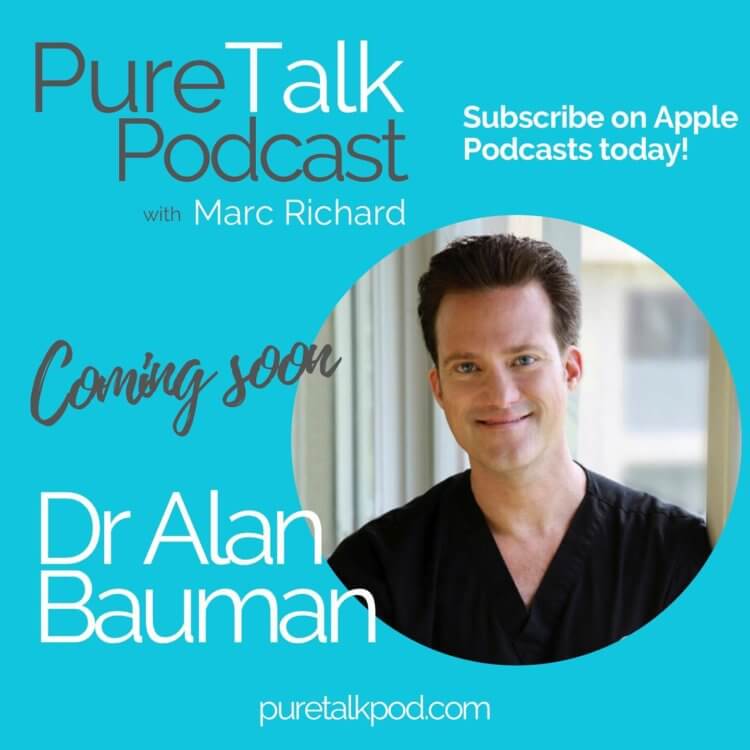
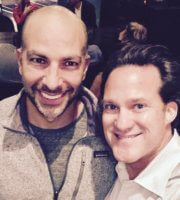 PODCAST: Hair Restoration Hair Transplant Interview with Alan Bauman MD by Peter Attia MD
PODCAST: Hair Restoration Hair Transplant Interview with Alan Bauman MD by Peter Attia MD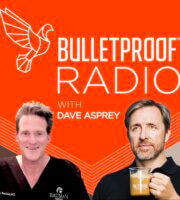 Dr. Alan Bauman sits down with Dave Asprey on Bulletproof Radio to discuss “Biohacking Baldness”
Dr. Alan Bauman sits down with Dave Asprey on Bulletproof Radio to discuss “Biohacking Baldness”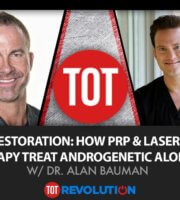 PODCAST: Listen to Dr. Bauman with Jay Campbell on TOT Revolution Discuss Hair Restoration Using Lasers and PRP
PODCAST: Listen to Dr. Bauman with Jay Campbell on TOT Revolution Discuss Hair Restoration Using Lasers and PRP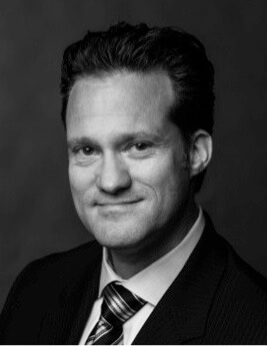 Dr. Alan J. Bauman, M.D.Hair Loss & Hair Transplant ExpertBoca Raton, FL
Dr. Alan J. Bauman, M.D.Hair Loss & Hair Transplant ExpertBoca Raton, FL